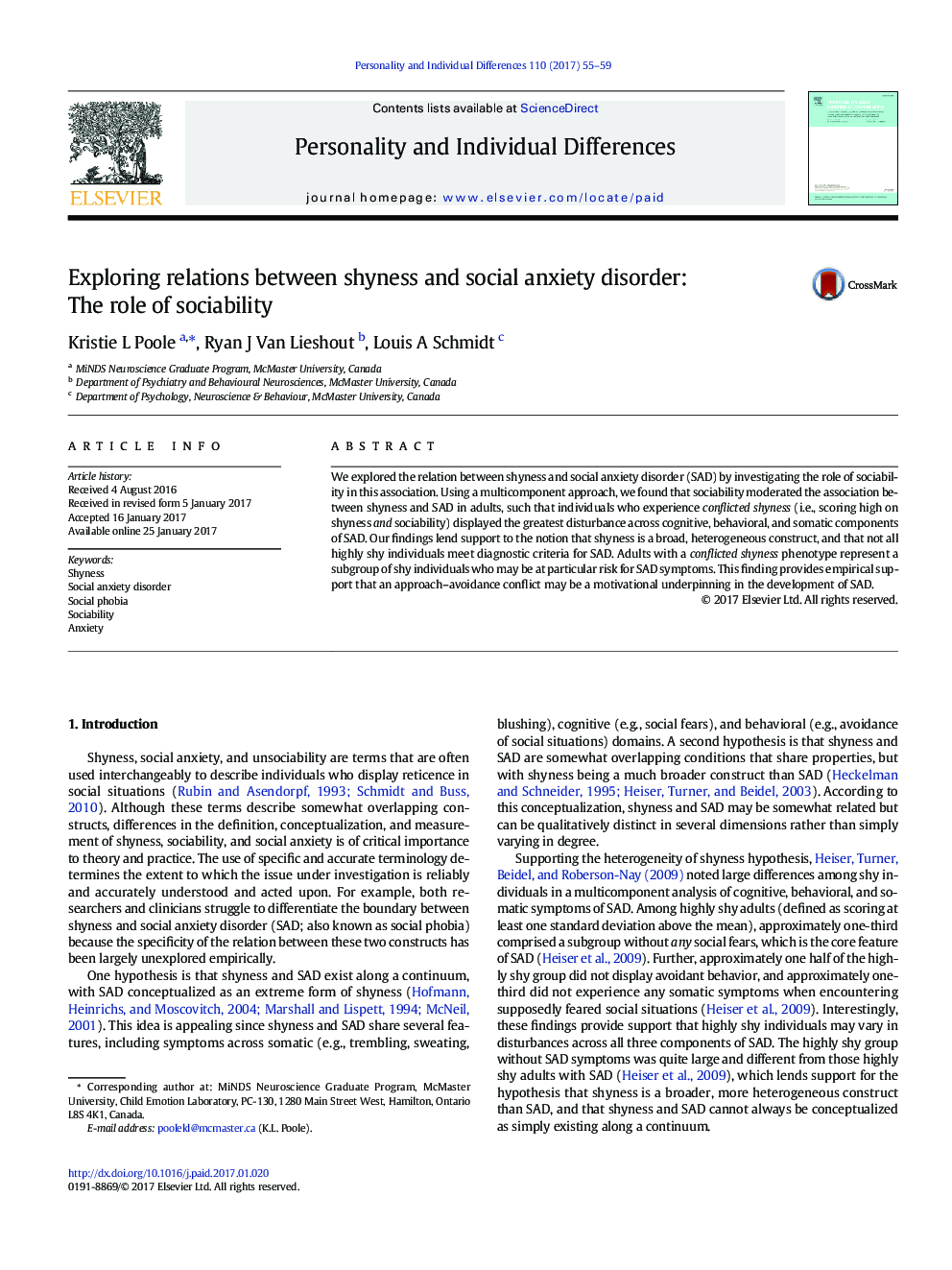| Article ID | Journal | Published Year | Pages | File Type |
|---|---|---|---|---|
| 5035805 | Personality and Individual Differences | 2017 | 5 Pages |
â¢The boundary between shyness and social anxiety disorder (SAD) is unclear.â¢Not all highly shy individuals meet diagnostic criteria for SAD.â¢Sociability moderates the association between shyness and SAD.â¢Adults scoring high on shyness and sociability are at greatest risk for SAD.â¢Findings support that an approach-avoidance conflict may underlie SAD.
We explored the relation between shyness and social anxiety disorder (SAD) by investigating the role of sociability in this association. Using a multicomponent approach, we found that sociability moderated the association between shyness and SAD in adults, such that individuals who experience conflicted shyness (i.e., scoring high on shyness and sociability) displayed the greatest disturbance across cognitive, behavioral, and somatic components of SAD. Our findings lend support to the notion that shyness is a broad, heterogeneous construct, and that not all highly shy individuals meet diagnostic criteria for SAD. Adults with a conflicted shyness phenotype represent a subgroup of shy individuals who may be at particular risk for SAD symptoms. This finding provides empirical support that an approach-avoidance conflict may be a motivational underpinning in the development of SAD.
